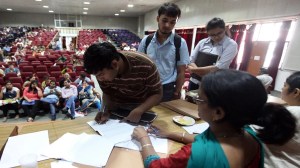- India
- International
To give women their due
Families have a preferred number of sons at any given fertility level as well as a preferred fertility level.
By Vani S. Kulkarni, Manoj K. Pandey and Raghav Gaiha
In his maiden Independence Day speech, Prime Minister Narendra Modi lamented the neglect of daughters, restrictions on their movements, parental attitudes that favoured sons, shameful rapes of girls and women, the lack of toilet facilities and sanitation. In a populist vein, he urged parents to treat sons and daughters equally, doctors to refrain from female foeticide, and every school to build separate toilets for girls. Undoubtedly, these add up to a bold and ambitious vision of social development in which men and women are equal participants. The complexities of gender inequity, however, cannot be resolved by the rhetoric of a “change of heart”.
In a pioneering contribution, Amartya Sen captured the cumulative impact of multiple forms of deprivation that women face in an intuitively appealing measure of “missing women”. It measures women’s adversity in mortality and seeks to better understand the quantitative difference between the actual number of women and the number expected in the absence of a significant bias against women in terms of health care and other resources for survival. After computing the difference between the sex ratio norm of women per 1,000 males and the actual sex ratio, it is multiplied by the number of males to obtain the number of missing women. In the same way, estimates of missing girls are computed. Our own recent research throws light on changes in the numbers of missing women and girls during the period covered by the Censuses of 2001 and 2011.
The sex ratio rose between 2001 and 2011. Using the same norm that Sen did, our estimates of missing women increased from 46.35 million in 2001 to 49.73 million in 2011. Although the increase in missing women despite a higher sex ratio may seem surprising, it is explained by the fact that the number of men grew rapidly to compensate for the smaller difference between the norm and the actual sex ratio in 2011. The child sex ratio depends on two factors: sex ratio at birth, and gender-specific mortality rates among children ever born. While preventing the abortion of female foetuses reduces a skewed sex ratio at birth, it has the likely consequence that “unwanted” girl foetuses grow into girls who are deprived of nutrition and healthcare. These unwanted girls will then be more vulnerable to infant and child mortality.
Families have both a preferred number of sons at any given fertility level (son preference) as well as a preferred fertility level (family size preference). Indeed, there is a very strong preference for having at least one son, and the desired sex ratio falls as family size increases. This is illustrated by Haryana’s low fertility and worst male sex ratio. An important point, however, is that, although the preference for sons decreases with the ideal family size, it does not completely disappear.

As girls account for a large share of the “unwanted” fertility (about 60 per cent) in northern India, prenatal sex-selection technologies have thrived despite legal restrictions (the PNDT Act of 1994 and its tightening in 2004). In the more than 15 years of the enactment of this law, a little over 600 cases have been lodged across the country, but the total number of convictions is an abysmal 20. Not surprisingly, selective abortions of girls ranged between 4-12 million during 1980-2010, and the practice has spread to most regions. The market for sex determination and selective abortion is large, at least Rs 6 billion per year,and growing.
Female education has ambiguous effects: it weakens son preference at a given family size, but it also results in a decline in fertility and a stronger son preference.
Do financial incentives make a difference? The Devirupak programme in Haryana rewards parents if they have either fewer children or a larger fraction of girls. Perversely, this lowered fertility and led to a more male-skewed sex ratio. Resting on the premise that changes in material conditions can seriously undermine an existing normative order such as patriarchy, recent evidence from villages in Punjab, Haryana and Himachal Pradesh points to reshaping of entrenched practices through a marriage “squeeze” — stringent marriage norms, patrilineal inheritance and patrilocal residence, old-age support of parents by sons, and lack of autonomy of women — as a consequence of the skewed sex ratio.
It is of course contestable whether this process of social transformation and gender equity is likely to be rapid and extensive without strict enforcement of legal provisions and advocacy and awareness activities that showcase women’s successes and their contributions to the family’s well-being.
Simplistic exhortations of a “change of heart” are not just rhetorical but raise expectations that are unlikely to be fulfilled.
Kulkarni is senior fellow, department of sociology, Yale University; Pandey is a researcher in economics, Australian National University; Gaiha is former professor of public policy, University of Delhi.
EXPRESS OPINION
More Explained
Apr 24: Latest News
- 01
- 02
- 03
- 04
- 05









































